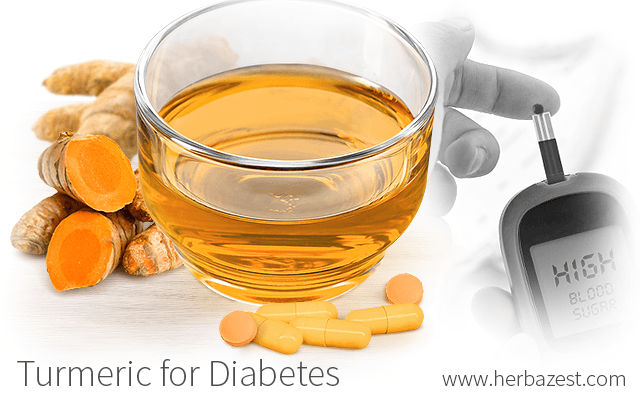Part of the ginger family, turmeric is a cherished herb in ancient folk medicine, and its rhizome is thought to hold antidiabetic properties. Because of its inexpensive and non-toxic nature, turmeric has gained notoriety in recent years as increasing scientific knowledge highlights its potential efficacy.
Diabetes: Causes & Triggers
Diabetes stems from a lack of insulin or from the body's inability to effectively use insulin, the hormone responsible for the absorption of glucose. Researchers have isolated several key factors responsible for the development of diabetes, including environmental, genetic, and lifestyle considerations.
Common risk factors for diabetes are:
- Heredity and genetic predisposition
- High blood sugar
- Diet
- Physical inactivity
- Obesity and presence of excess abdominal fat
- Age
- High cholesterol
- High blood pressure
However, diabetes can also be triggered by apparently unrelated causes, such as viral infection, vitamin D deficiency, increased insulin demand, over-consumption of sugary foods, and exposure to toxins.
How to Use Turmeric for Diabetes
While there are many different ways to use turmeric for diabetes, the best ones take into account that for turmeric's active compounds to be absorbed by the body and bring the full benefits of the herb, they need to be consumed along with healthy fats. Consider the following ideas:
- Turmeric yogurt. Mix one teaspoon of ground turmeric and two teaspoons of lemon juice together with a yogurt that contains some fat. Consume immediately after lunch and dinner.
- Turmeric beverages. For a simple home remedy for pre-diabetes, thoroughly dissolve one teaspoon of turmeric in warm water or milk. Add a bit of cinnamon for flavor, but be careful of sweeteners that could exacerbate the problem. Drink one cup daily while warm.
- Turmeric supplements. Perhaps the best way to consume turmeric for diabetes, tablets and capsules are often combined with other enzymes to help the body retain as much of turmeric's antidiabetic properties as possible.
- Use of turmeric in other foods. Black pepper contains a compound called piperine, which helps the body absorb turmeric's ingredients. Therefore, use turmeric spice and black pepper as part of a healthy, well-balanced diet.
Turmeric Antidiabetic Action
A 2005 pre-clinical investigation on the effects of turmeric extracts on blood sugar levels in type 2 diabetic mice highlighted the hypoglycemic effect exerted by the presence of curcuminoids and sesquiterpenoids over a four-week period.1 The control group exhibited increased blood glucose levels, whereas those treated with turmeric did not.
Additionally, a 2012 randomized, double-blind study tracked the progression of diabetes in 240 pre-diabetic participants, who received either curcumin or placebo capsules for nine months.2 At the end of treatment, 16.4% of the placebo group had developed type 2 diabetes, while the entire curcumin group remained diabetes-free and also exhibited improved function of beta cells, which are responsible for producing insulin and releasing it into the bloodstream.
Other Herbs for Diabetes
Artichoke, onion, lettuce, and beans are a few other herbs with antidiabetic properties. Add them alongside turmeric in a warm, winter stew for a healthy meal for diabetes.
When it is used as a culinary spice, another option to reap the benefits of turmeric for diabetes is to sprinkle it into this lucuma carrot apple smoothie with cinnamon for a combined antidiabetic action.
Under controlled treatment with herbal remedies made from turmeric, diabetes and other insulin-related illnesses may be successfully prevented or managed. While the depth of current scientific knowledge is greatly limited to in vitro and in vivo-based analyses of turmeric's antidiabetic action, these studies are promising, highlighting a need for more extensive clinical research.
Sources
- Blood Sugar & Spice: living with diabetes
- National Institutes of Health, National Institute of Diabetes and Digestive and Kidney Diseases, Causes of Diabetes
- The Herb Book, pp. 62-63
- Evidence-based Complementary and Alternative Medicine, Curcumin and diabetes: A systematic review, 2013
Footnotes:
- Journal of Agricultural and Food Chemistry. (2005). Curcuminoids and sesquiterpenoids in turmeric (Curcuma longa L.) suppress an increase in blood glucose level in type 2 diabetic KK-Ay mice. Retrieved September 23, 2021, from: https://pubs.acs.org/doi/10.1021/jf0483873
- Diabetes Care. (2012). Curcumin extract for prevention of type 2 diabetes. Retrieved September 23, 2021, from: https://www.ncbi.nlm.nih.gov/pmc/articles/PMC3476912/




